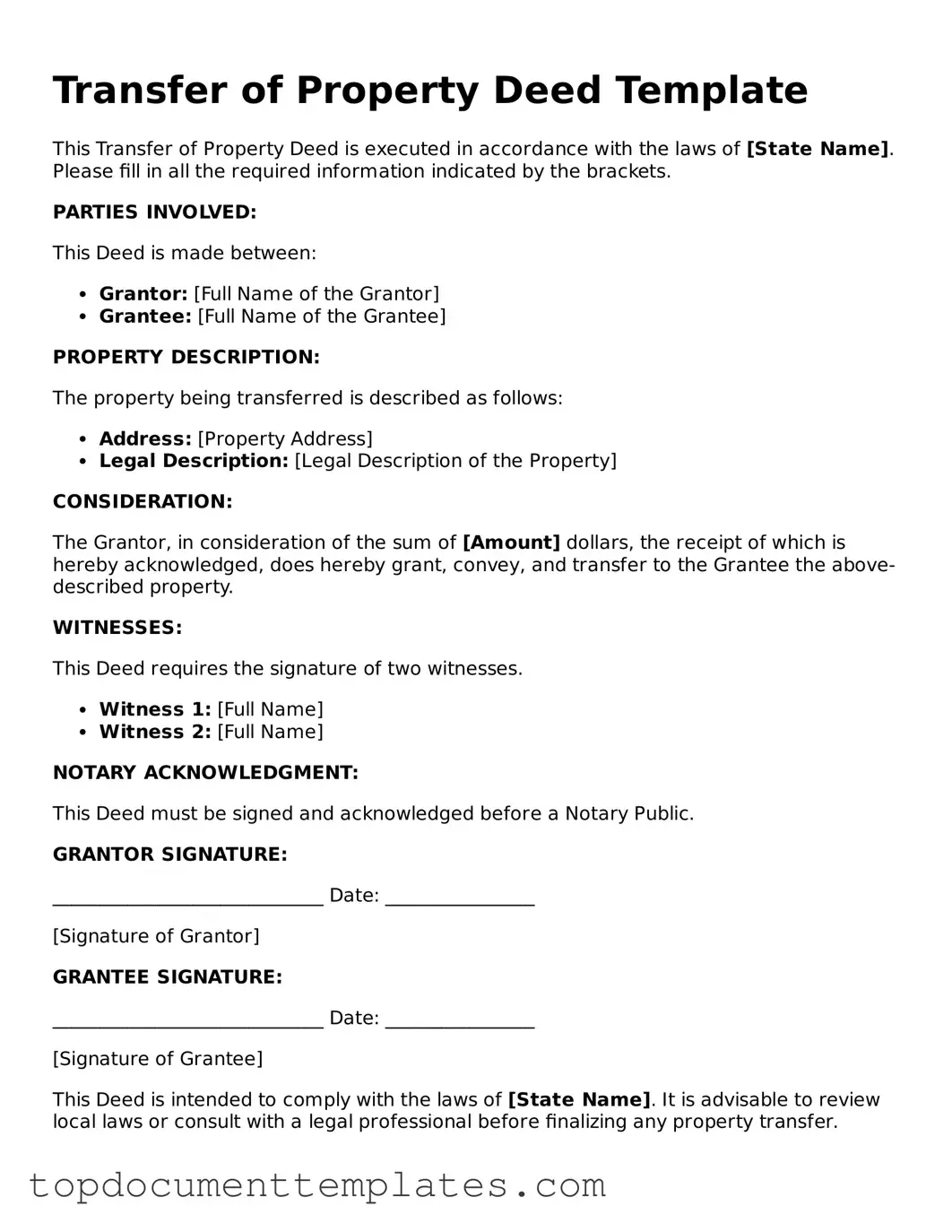The Deed form serves as a fundamental legal instrument in property transactions, facilitating the transfer of ownership from one party to another. It encapsulates essential details such as the names of the parties involved, a clear description of the property being transferred, and the terms under which the transfer occurs. This document is not merely a formality; it carries significant weight in establishing legal rights and responsibilities. The form typically requires the signatures of both the grantor, who is transferring the property, and the grantee, who is receiving it, often necessitating notarization to enhance its validity. Additionally, it may include clauses that outline any conditions or restrictions associated with the property, ensuring that all parties are aware of their obligations. Understanding the intricacies of the Deed form is crucial for anyone involved in real estate transactions, as it lays the groundwork for a legally binding agreement and provides a clear record of ownership that can be referenced in the future.
